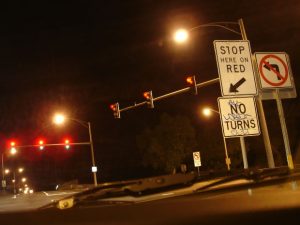The National Highway Traffic Safety Administration is proposing a rule that would accelerate the kind of vehicle-to-vehicle technology that would allow cars to “talk” to one another, and ultimately prevent accidents.
Under the proposed rule, all new cars and like trucks would communicate wirelessly not just with one another, but with traffic lights and other roadway infrastructure. NHTSA officials say the technology has the potential to transform driving and dramatically slash the number of traffic deaths every year. The rule would be mandatory for all new model vehicles, if the rule is approved.
So how exactly would this work? Well first, it’s important to outline what V2V is. It is a type of crash avoidance technology that hinges on the communication of information between nearby vehicles that can warn drivers about possibly hazardous situations that might lead to a collision. For instance, V2V technology could alert a driver that the vehicle up ahead is breaking, so they need to slow down. It could also inform a motorist that it isn’t safe to go through an intersection because another vehicle – one that can’t yet be seen by the driver – is fast approaching that same intersection. The information communicated would involve short-range data (about 300 meters) that would include other vehicle information such as:
- Location
- Speed
- Direction
- Breaking status
This information exceeds what can be gleaned from the current cameras, radar and ultrasonic sensors that many vehicles are currently affixed with. V2V communications can also detect a threat much sooner than camera sensors or radar. In fact, the data is shot out at a rate of about 10 times per second. Continue reading
 Broward Injury Lawyer Blog
Broward Injury Lawyer Blog




